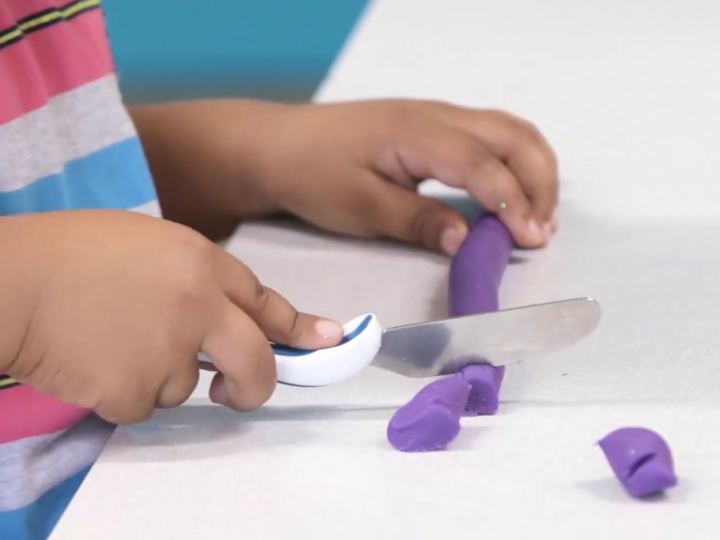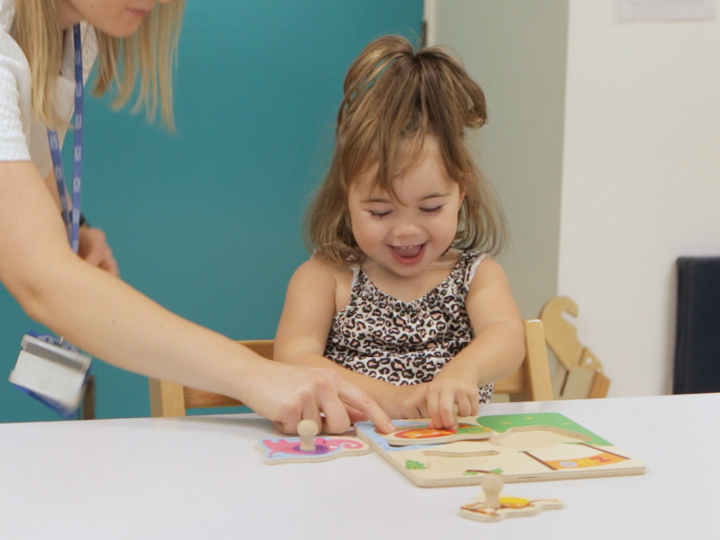Cutlery skills
- Feeding and eating

Learning to self-feed requires a complex range of skills that develop over time. It is common for children to find it hard to learn to use cutlery and to stay clean whilst eating. Encourage your child to practice regularly and give them lots of praise
Explore the topics on this page:
How to develop your child's cutlery skills
After your child has mastered the basics of self-feeding they may start to develop their skills by using cutlery and drinking from a cup. Some children may find these skills harder to learn, and it might take a little while.
Top tips
- Check the cutlery is the correct size for your child. If your child is struggling to hold the cutlery try using thicker cutlery or easy grip cutlery.
- Encourage your child to hold their knife and fork with their hands pointing down towards the plate. Their index fingers should point down the back of the knife and fork towards the prongs or blade. It may help to place a visual picture next to their place mat to help remind them. Or try marking their cutlery with a sticker or pen to help prompt them where to place their index fingers.
- You can try guiding your child’s hands to their mouth whilst they are holding the cutlery. This is called hand over hand.
- Encourage your child to prod with their fork and saw with their knife. When first learning to cut it’s a good idea to only give them soft foods. Some foods such as thicker yoghurt, boiled potatoes or cooked vegetables are a good choice. Gradually increase the difficulty of the food as they develop their skills.
- Use a non-slip mat under your child’s plate to prevent it moving.
- Allow them plenty of time to practice and use lots of praise to help motivate them. You can encourage them to practice using a knife and fork away from mealtimes during a fun activity.
- You can read story books about eating and drinking, play tea party games or sing songs about eating and mealtimes.
- Encourage your child to sit in a good sitting position at the table. Read our guidance on sitting position for eating and drinking.
Activities to try
Encourage them to get involved in games or activities which require your child to hold one hand still while moving the other hand will help. For example, construction games, colouring or baking. They could practice holding a bowl while mixing with a spoon.
You could also try introducing cutlery during play time. For example, they can practice cutting up with playdough.
To learn to take food off their fork, encourage them to practice scooping dried peas, rice or balls of playdough using cutlery and transferring them into another container. This will help to develop their control along with hand-eye coordination.
Have you tried looking at our general advice?
You may want to look at our general advice page to read more about cutlery skills.
Last reviewed: 19 January, 2024

